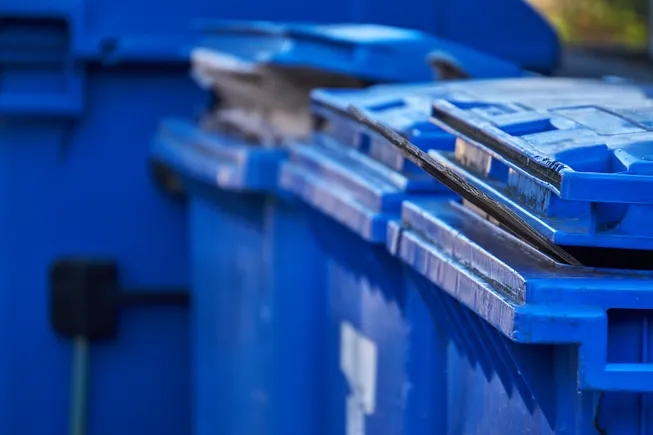Where is funding to build a “circular economy” for plastics going? How are recycling and recycled content trends evolving?
Multiple nonprofits and business groups addressed these and related questions in new reports this summer, including from The Circulate Initiative, World Bank’s International Finance Corporation, WRAP, the Ellen MacArthur Foundation, the Bank of America Institute and the PET Recycling Coalition. These are some of the statistics they highlighted:
$32 billion was the recent yearly average investment in plastics circularity
Over the six-year period from 2018 through 2023, global investments in plastics circularity totaled $190 billion and averaged $32 billion per year, with more than half invested in North America. That’s according to the Plastics Circularity Investment Tracker, reported on by the nonprofit Circulate Initiative and supported by IFC, a member of the World Bank Group.
Report authors said those totals are still “significantly below” the $1 trillion they project would be needed per year to reduce “mismanaged plastics” globally by 2040. Still, they see extended producer responsibility, recycled content mandates and other policies spurring investments.
Banks financed the most deals, followed by corporate investments, private equity, venture capital, initial public offerings and then other smaller sources.
Plastics circularity investments decreased last year
Global plastics circularity investments, 2018-2023
Meanwhile, “emerging” economies in geographies impacted the worst by plastic pollution are receiving a small fraction — 6% — of investments.
Separately, a 2023 progress report released July 30 by the nonprofit Alliance to End Plastic Waste — whose membership includes Amcor, Berry, Dow, Pregis, Procter & Gamble and dozens of others — shows that since its inception in 2019, the group reported $289 million of catalyzed funding commitments toward mission-related activities. The organization is dedicated to “enhancing waste management capacity and capability by improving collection, sorting, processing, and recycling systems, especially in underserved regions.”
82% of global plastics circularity investments are going to recovery and recycling
Investments were still heavily skewing toward plastics recovery and recycling between 2018 and 2023, according to the Plastics Circularity Investment Tracker. Just 4% were tracked to refill and reuse, one example being PepsiCo’s more than $3 billion acquisition of SodaStream International in 2018.
Recovery and recycling have gotten the lion’s share of investment
Percentage of global plastics circularity investments by archetypes, 2018-2023
The global economy is 7.2% ‘circular’
That’s down from 9.1% in 2018, “meaning more than 90% of materials extracted are either wasted, lost, or remain unavailable,” according to a July 2024 analysis from the Bank of America Institute. BofA Global Research projects that “plastic consumption, waste, emissions and leakage” could rise by 50% to 70% by 2040 as global use of the material grows.
The US residential recycling rate for PET bottles is now 28%
The statistic was featured in an August report from the PET Recycling Coalition, a brands-backed initiative of The Recycling Partnership. Since 2022, the coalition has worked to increase the capture of PET bottles; widen acceptance of trays, cups and clamshells in community recycling collection programs; unlock new supplies of recycled material for packaging manufacturers; and strengthen recycling systems of pigmented and opaque material. To date, its work has involved about $5 million in grant funding.
Plastics Pacts globally have increased recycled content by 44%
That’s according to a six-years-in impact report on the Plastics Pact Network from WRAP (the U.K.’s Waste and Resources Action Programme) and the Ellen MacArthur Foundation. The groups, like the U.S. Plastics Pact, work in part to recycle more plastic packaging and replace virgin plastic use with postconsumer recycled content or biobased materials.
They also report that design for reuse, recyclability and compostability “in practice and at scale” has risen by 23%. According to the report, the first such pact launched in the U.K. in 2018, and pacts now cover 19 countries, where members collectively account for one-third of the plastic packaging placed on the market in those nations.
Who’s involved in Plastics Pacts today?
Membership breakdown by type of organization
Meanwhile, growth appears to be slowing for new sustainable packaging commitments and initiatives among some of the largest CPGs, according to Food Packaging Forum data covering companies including Mars, Nestlé, PepsiCo, P&G, The Coca-Cola Co. and Unilever that was analyzed by Rabobank. Still, Rabobank tracked new commitments or initiatives at all but P&G so far this year when it released its latest report on trends in plastic packaging in the U.S. and EU in late July.

